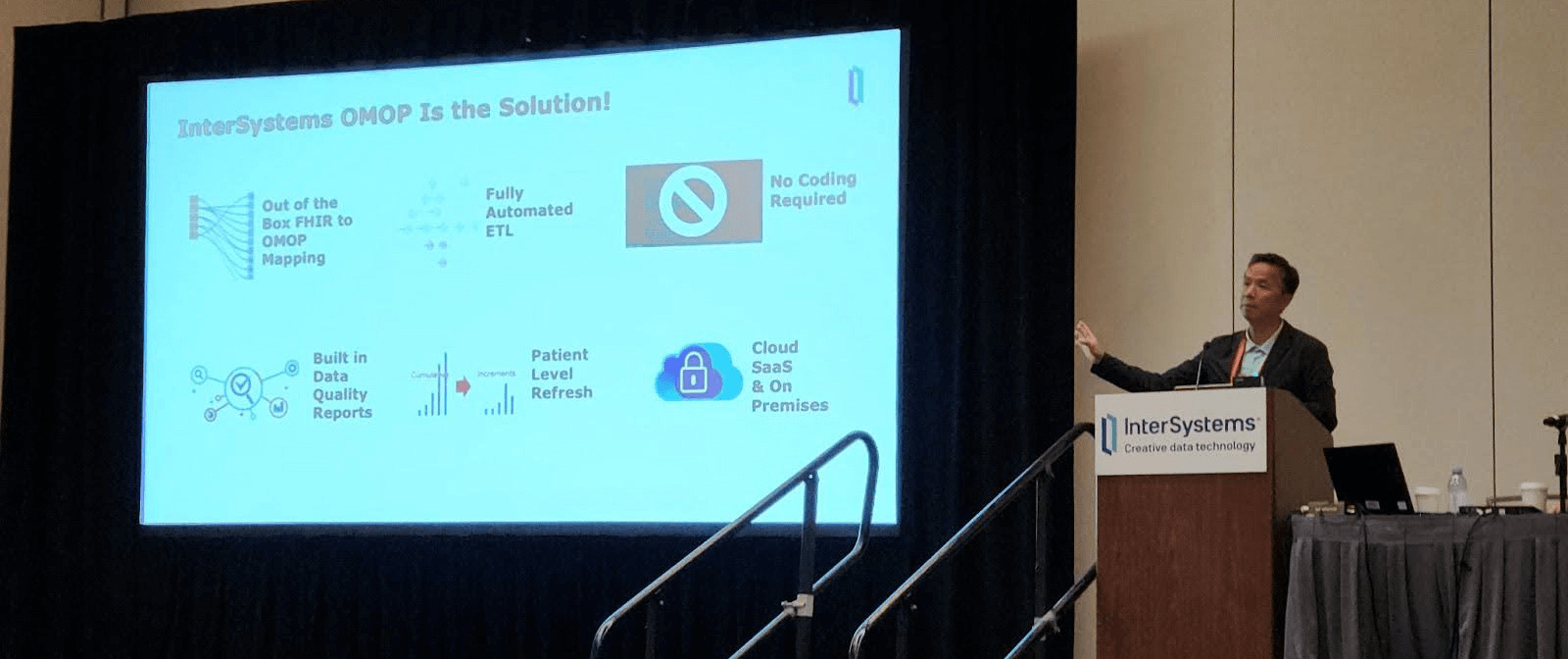
Tuesday’s presentation, “Accelerate Real World Data Network with InterSystems OMOP,” was given by Qi Li, Physician Executive at InterSystems. The session focused on Real-World Data (RWD), defined as patient health status or healthcare delivery data routinely collected from sources such as EHRs, claims, registries, Patient-Reported Outcomes (PROs), and devices. Dr. Li described Real-World Evidence (RWE) as clinical evidence regarding the usage, benefits, or risks of medical products, with the FDA issuing final guidance on RWD in July 2024.
The presentation outlined the progression from Clinical Data Warehouses to full data warehouses and then to study-specific data uses. A key component discussed was the Observational Medical Outcomes Partnership (OMOP), established in 2008. The OMOP Common Data Model has since been adopted and expanded by Observational Health Data Sciences and Informatics (OHDSI). Over 4,000 organizations have widely adopted OMOP, utilizing standardized fields and vocabularies.
Dr. Li presented recent learnings from a presentation in Sweden regarding increasing Nordic Health Data Collaboration, emphasizing the need to improve technical and semantic understanding. In another example, HDR UK is collaborating with NHS partners across the UK to operationalize cohort discovery capabilities in new health data domains using OMOP. Minnesota Regional Health Surveillance implements a centrally managed code for generating summary data and an encrypted data shelter for external data.
Top issues identified in data management include manual processes with custom scripts, high costs, limited use of FHIR APIs for OMOP, despite its presence in EHRs, and concerns regarding data quality. The presentation highlighted solutions such as a no/low-code environment and the ability to perform patient-level refreshes using FHIR as a standard, eliminating the need to completely purge or clean data. OMOP is designed for de-identification to facilitate sharing and research. The system can be purchased on the Amazon marketplace and offers potential price reductions of up to 50%. The platform allows for review of data and transformation errors.
Following that discussion, there was a demonstration of the Cloud Services Portal, illustrating how to create a deployment with the ISC OMOP option using HealthShare. This process involves filling in details such as S3 bucket name, S3 directory, and terminology prefixes. A unique patient key FHIRPath Expression is used to determine unique patient identifiers (e.g., MRN). Users can also make selections for data filtering and suppression and enable external database access (currently only available with AWS).
The demonstration showed pipeline instances (for transformation runs) and the OMOP on the IRIS database as running deployments. Users can upload files and view transformation metrics to identify errors and warnings, such as “No source data found” for SNOMED codes or warnings about missing race information. Custom or legacy terminology can be imported to define new mappings if queries do not conform to specific mappings. The system also allows you to configure your favorite JDBC tools for querying patient tables, with location data being suppressed.
Future enhancements include using Generative AI as an add-on to review ingestion and transformation errors, providing plain language summaries, and offering resolution steps or advice. Briya AI Co-Pilot on OMOP offers a Population Builder and a chatbot for interacting with OMOP data. Additionally, the Usagi tool can be used to convert data to preferred formats to improve recognition.

